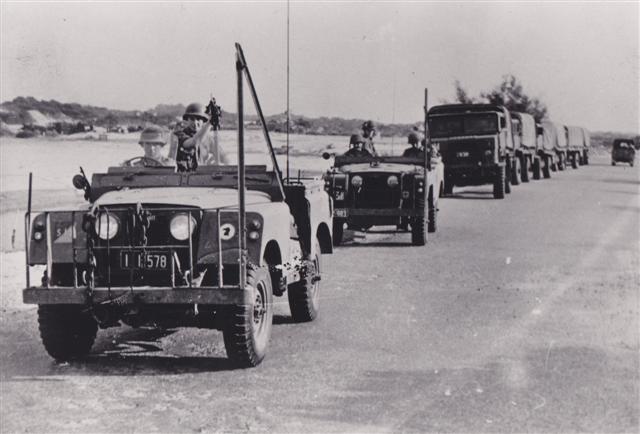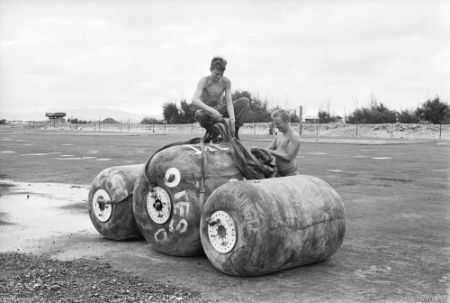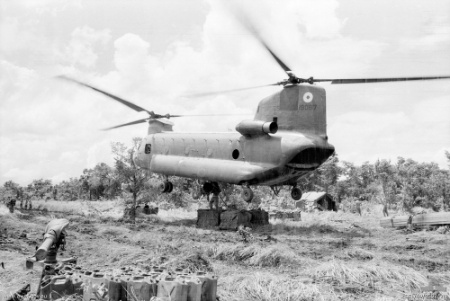Resupply Activities Vietnam



Support of the Task Force Base
A daily convoy resupplied the base, supplemented by special deliveries by road or air for either perodic or urgent maintenance.
1 Coy convoy en route Nui Dat
Vung Tau May 1966
Although the 30 km of road from the base at Vung Tau to the Task Force base at Nui Dat was not in an enemy controlled area, the possibility of ambush required vehicles to run escorted.
'Gun jeeps' mounted with radio, machine guns and wire deflecting bars were required to accompany each convoy.
The utility of the machine gun being attached to the vehicle was open to question, but it gave the appearance of preparedness. The benefits of being prepared were reflected in the absence of serious attacks against vehicles on this route.
Photo: D.B. Ferguson
Loading fuel bladders St Kilda Pad
Vung Tau August 1968
Loading of utility helicopters was usually carried out by all units, so the work of 176 Air Dispatch Coy was limited – so limited that the initial motto adopted shortly after arrival of nil loadum Caribou, later changed to nil loadum any bloody thing.
While this was not strictly true, their services were generally limited to bulk loads, including specials where their ingenuity helped US riggers whose training, while extensive, tended to be over-rigid.
Here Ptes A. Haabjoern and A. McPhee of 176 AD Coy are rigging 1,000 and 2,000 litre sealdrums for an underslung load for a US Chinook helicopter to deliver to an Australian fire support base.
Australian War Memorial ERR/68/798/VN
Support of Field Operations
Units on operations were supplied by road or air, either direct from Nui Dat or Vung Tau, or from a fire support base – a flexible response system, tailored to means available, urgency and feasibility.
Chinook helicopter unloading
Phuoc Tuy July 1969
Fire Support Base Flinders was established to support operations by 9 RAR in the north of the province. As Australian helicopters were limited to utility models, the US Army medium lift Chinooks were called in for resupply and deployment tasks, carrying bulky loads externally in slings under the aircraft for quicker packing, pick up and unloading.
Fuel for armoured vehicles and helicopters was delivered in 1,000 or 2,000 litre bladders called sealdrums, but water was carried in jerricans as the sealdrum linings contaminated potable water. These operations used large quantities of slings, lashings and containers, collection and backloading of which after use being a major task.
Australian War Memorial BEL/69/502/VN
Resupply Activities Vietnam


